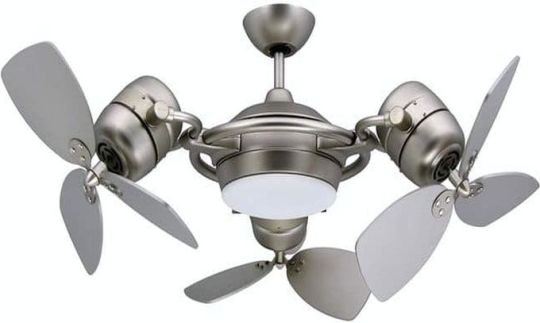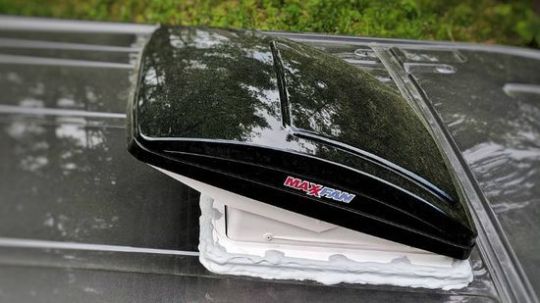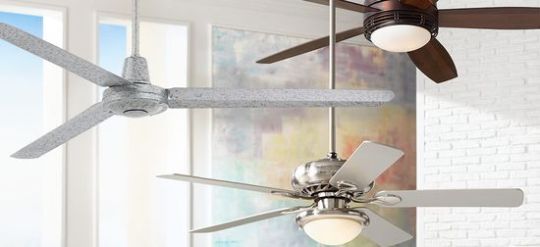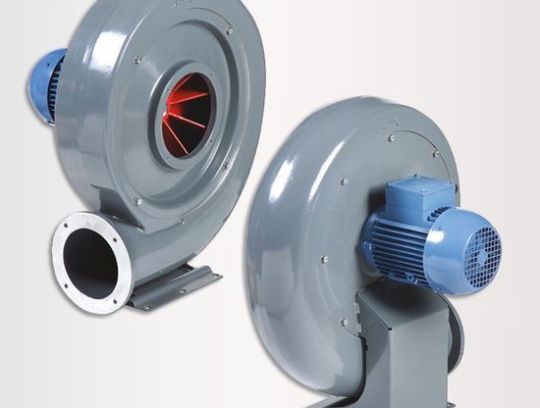#EC Axial Flow Fans
Explore tagged Tumblr posts
Text
Cooltron EC Axial Flow Fans Wholesale Across North America

When it comes to air movement solutions that stand the test of time, Cooltron is the name you can trust. Our EC Axial Flow Fans are engineered with the latest technology to deliver superior performance and energy efficiency across a wide range of applications, from industrial settings to commercial spaces. Whether you're in the bustling cities of the United States, the vast landscapes of Canada, or the vibrant regions of Mexico, our fans are designed to meet your needs with reliability and innovation.
Energy Efficiency Meets Performance
At Cooltron, we understand the importance of energy savings without compromising on performance. Our EC Axial Flow Fans are equipped with electronically commutated (EC) motors, which use up to 70% less energy compared to traditional AC motors. This not only reduces your operating costs but also contributes to a more sustainable environment. The integrated speed control allows for optimal airflow adjustment, ensuring that you get the perfect balance of power and efficiency, no matter the size or specific requirements of your space.
Built to Last
Durability is at the core of every product we manufacture. Our fans undergo rigorous testing to ensure they can withstand the most challenging conditions. Constructed with high-quality materials and precision engineering, Cooltron's EC Axial Flow Fans are built to last, providing you with a long-term solution that requires minimal maintenance. This commitment to quality means you can invest with confidence, knowing that your purchase is backed by our reputation for excellence.
Quiet Operation for Every Environment
Noise pollution is a concern in many environments, and that’s why we’ve prioritized quiet operation in the design of our EC Axial Flow Fans. With advanced noise reduction technology, these fans operate smoothly and quietly, making them ideal for offices, schools, hospitals, and residential areas where a peaceful atmosphere is essential. You can enjoy efficient air circulation without the distraction of loud machinery.
Tailored Solutions for Diverse Needs Every space has unique requirements, and that’s why Cooltron offers a variety of models within our EC Axial Flow Fan line. From compact units suitable for small rooms to powerful systems capable of ventilating large warehouses, we have a solution that fits your specific needs. Plus, with easy installation and user-friendly controls, getting started with a Cooltron fan is as simple as it gets.
Warranty and Support
We stand behind our products with a comprehensive warranty and a dedicated customer support team ready to assist you. When you choose Cooltron, you’re not just buying a fan; you’re gaining a partner committed to your satisfaction and success. Our knowledgeable staff is available to provide guidance and technical support, ensuring that your experience with our EC Axial Flow Fans is nothing short of exceptional.
Whether you're looking to upgrade your existing ventilation system or install a new one, Cooltron’s EC Axial Flow Fans offer the perfect blend of performance, efficiency, and durability. Available now for wholesale across all states in the USA, Canada, and Mexico, including their respective counties, municipalities, and districts, these fans are set to revolutionize the way you think about air movement. Make the smart choice today—choose Cooltron for a future of fresh, clean, and efficiently circulated air.
0 notes
Text
0 notes
Text
Electronically Commutated (EC) Fans Market to Perceive Substantial Growth during 2031
Transparency Market Research delivers key insights on the global electronically commutated (EC) fans market. In terms of revenue, the global electronically commutated (EC) fans market is estimated to expand at a CAGR of 4.8% during the forecast period, owing to numerous factors, regarding which TMR offers thorough insights and forecasts in its report on the global electronically commutated (EC) fans market.
Companies are heavily investing in R&D to launch an exclusive collection of electronically commutated (EC) fans. Manufacturers are expanding their product lines to meet the increasing demand for electronically commutated (EC) fans. Moreover, the growing demand from the industrial segment is expected to boost the market during the forecast period.
Get a PDF brochure for Industrial Insights and business Intelligence @ https://www.transparencymarketresearch.com/sample/sample.php?flag=B&rep_id=74225
Electronically Commutated (EC) Fans Market: Key Segments
In terms of type, axial fans are expected to hold a major share of the electronically commutated (EC) fans market, followed by centrifugal, mixed flow, and cross-flow fans. The operating speed of axial fans is higher than centrifugal fans. Furthermore, axial fans are available in a compact design and offer a high volume of air as compared to other fans. All these factors are expected to boost their demand during the forecast period.
Based on mounting type, spider mounting electronically commutated fans are expected to dominate the market during the forecast period. However, despite holding a major market share, the spider mounting type segment is expected to expand at a slow growth rate during the forecast period.
In terms of voltage, 110 VAC- 210 VAC electronically commutated fans are likely to be the highly sold motor across the globe from 2017 to 2031. This voltage range is preferred in different end-use industries for different applications such as cooling applications and others.
In terms of motor design, the external motor segment is expected to hold a major share and expand at the fastest rate during the forecast period. Most electronic companies are replacing their existing fans with EC fans due to their controllability, efficiency, and cost-saving characteristics. This is expected to have a positive impact on the electronically commutated (EC) fans market in terms of motor design during the forecast period.
Based on motor output power, the below 0.5 HP (~350W) segment is expected to hold a dominant share in the global electronically commutated (EC) fans market at a maximum average value CAGR rate during the forecast period. This range of power is preferred throughout the market.
In terms of application, the global market is strongly dependent on the automotive industry, HVAC, and manufacturing industry among others. The future prospects of the above-listed industries are intensely correlated to economic activity, especially in core sectors such as heating & ventilation, consumer electronics, etc.
Electronically Commutated (EC) Fans Market: Prominent Regions
The market in Asia Pacific is expected to expand at the highest CAGR and become a significant market for electronically commutated (EC) fans in terms of sales. The region has predominantly developing countries, which are witnessing growth in their industrial sector. Furthermore, various industries are shifting their manufacturing facilities to the Asia Pacific region. Therefore, the market in this region is anticipated to have the fastest growth rate throughout the forecast period. In the region, China is the largest Asian market for electronically commutated fans. Moreover, Europe is expected to be a prominent region in terms of electronically commutated (EC) fan sales during the forecast period.
As compared to other regions, the markets in the Middle East & Africa, and South America are expected to witness a slower growth rate during the forecast period.
Get a Customized Research Report @ https://www.transparencymarketresearch.com/sample/sample.php?flag=CR&rep_id=74225
Electronically Commutated (EC) Fans Market: Key Players
Key players operating in the global electronically commutated (EC) fans market are Airtècnics, Continental Fan, Delta Electronics, Inc., Ebm-papst, ECOFIT, Epec LLC., Heko Electronic (Suzhou) Co., Ltd., Hidria, Orion Fans, Rosenberg Ventilatoren GmbH, Systemair AB, Sunonwealth Electric Machine Industry Co. (Sunon), and Ziehl-Abegg SE, among others.
Global Electronically Commutated (EC) Fans Market: Segmentation
Electronically Commutated (EC) Fans Market, by Type
Centrifugal Fan
Backward Curved
Forward Curved
Axial Fan
Mixed Flow Fans
Cross Flow Fans
Electronically Commutated (EC) Fans Market, by Mounting Type
Spider Mounting
Cube Mounting
Electronically Commutated (EC) Fans Market, by Voltage
Below 110 VAC
110 VAC- 210 VAC
Above 210 VAC
Electronically Commutated (EC) Fans Market, by Motor Design
Internal Motor
External Motor
Electronically Commutated (EC) Fans Market, by Motor Output Power
Below 0.5 HP (~350W)
0.5~ 1.0 HP (350~ 750W)
1.0~ 3.0 HP (750~ 2.3kW)
3.0 ~ 5.0HP (2.3 ~ 4 kW)
Above 5.0 HP (4kW ~)
Electronically Commutated (EC) Fans Market, by Application
Marine Industry
Food Processing & Manufacturing Industry
Automotive Industry
IT & Telecom Industry
HVAC
Others (Consumer Products Industry, etc.)
Inquiry Before Buying: https://www.transparencymarketresearch.com/sample/sample.php?flag=EB&rep_id=74225
About Us
Transparency Market Research is a global market intelligence company, providing global business information reports and services. Our exclusive blend of quantitative forecasting and trends analysis provides forward-looking insight for thousands of decision-makers. Our experienced team of Analysts, Researchers, and Consultants, use proprietary data sources and various tools and techniques to gather and analyze information.
Our data repository is continuously updated and revised by a team of research experts so that it always reflects the latest trends and information. With a broad research and analysis capability, Transparency Market Research employs rigorous primary and secondary research techniques in developing distinctive data sets and research material for business reports.
Contact
90 State Street, Suite 700
Albany, NY 12207
Tel: +1-518-618-1030
USA – Canada Toll-Free: 866-552-3453
Email: [email protected]
Website: https://www.transparencymarketresearch.com
0 notes
Text
Wholesale İndüstrial Filter
Industrial fan, a huge industry has comprehensive strategies. This is achieved by way of hearting several blades linked to a hub and shaft and driven with the aid of a motor. The speeds of those fanatics vary with the applications.wholesale indüstrial filter A blower is some other name for a fan that operates in which the fan is downstream as the idea of improvement. Most commercial lovers are fanatics of general sorts: centrifugal and axial lovers.
Axial Fans
Sometimes additionally as propeller lovers, in big prunings, they flow large volumes of air at pressures in lovers. Air enters and exits the fan via the fan hub. Uses indicate protection, from small applications which includes electric cooling to plumbing homes and tunnels.
Axial layout, a hub is designed radially or radially to challenge the middle and outer round axially to recognise the motion of air gasoline. The fluid movements parallel to the shaft or loop of the fan wheel.wholesale indüstrial filter The axial fan wheel rotation is placed in a short segment of the canalic ducts where they could input from the inlet and outlet.
Axial lovers have fan wheels with pitches less than 3 meters) to toes (9 m) in-among diameters, however axial fan wheels can exceed eighty two toes ().
In preferred, axial lovers are used for the large insurance of the simple human profile and both the group and the wider design.
Axair elements axial lovers with frames, axial fanatics with plates, axial enthusiasts with frames and in EC excessive performance specifications.
Centrifugal Fans
The centrifugal layout makes use of centrifugal force to actuate centrifugal force by way of a rotating disk with blades directed toward the air gear or set up at right angles to the disk.
The creation of the hub and the blades is referred to as the fan wheel and includes one or the other that has standard dynamic or software functions. wholesale indüstrial filter The centrifugal fan wheel is typically in an association within the fan housing. From the out of doors of the rotating fan the air or fuel is exhausted to an outlet at the most important diameter of the enclosure. This simultaneously draws more air or gasoline from the important hole to the wheel.
It is a gadget used for business clear out systems. Filter systems, an e fan, a dust filter out bag, a clear out cleansing device and a dustbin to address masses of high dust weights.
It is used to take advantage of the terminations of filter structures. Dust collection is a process used for series to be taken as a supply from a text. The dirt collector may be a device in use due to situations wholesale indüstrial filter of the types having a single structure. Used as a climate control tool to shield or decorate climate.
Desiccant filters purify nice liquid droplets from the air. They are used for checking out steel operating fluids, coolant or oil. Dried collectors are used to apply or defend the air in the work surroundings.
Smoke collector structures are used to take away filters from the air in very small microns. Effectively or small measures the materials and gases of welding, rubber and plastic processing, bloodless and speedy paintings, annealing and comparable business processes.
Types of Filter Systems
There are five predominant styles of commercial filter out structures:
Separators and Cyclones
Bag Filters
Wet clear out Wet Scrubber
Unit collector filters
Electrostatic precipitating filters
What is "dust"?
Dust; consisting of very small cloth; very pleasant, powder-like substance on the ground, on, or in weaponry.
Why is “Dust” a Problem?
Canal or reasons
Causes health hassle for workers
Causes safety difficulty for equipment and facilities
Sanitation and hygiene control will become difficult
growth care
overseeing gadget
Making it tough to shop valuables.
Where is the Dust Problem Found?
Everywhere – product transfer Plant, plant drain, tunnel, tunnel, software, even in workplaces and houses.
The clear out baggage and the dirt cake at the media floor assist in filtration to split the debris from the incoming polluted air circulate, from the fresh air exiting the bag into the ecosystem.
Bag Cleaning Systems in Filter Systems:
Reverse-pulse (pulse-wave or Jet-Pulse)
High Pressure Low Volume
– Low volume of eighty to a hundred psig air
– Cleaning air supplied through the compressed air system
– Oil and moisture infection from the compressed air device is commonplace.
Medium Pressure
– 10-15 psig at medium to high air extent
– A effective displacement blower is used to deliver the air.
– Air supply nearby to the inlet of the PD blower; Oil and moisture infection are normally no longer a trouble.
Low Pressure – 30-one hundred “w.C.
– A fan is used to deliver excessive quantity air at low pressure.
Bag Filter Systems Air Inlet Configuration
A properly designed and carried out air intake gives many functionalities:
– Allows the air flow with the particles to enter the filter without detrimental the bag.
– Leaves enough room to enter the bag with out suffocating.
– Allows debris to fall from the air flow into the clear out decrease funnel.
High Air Intakes
– For medium to mild dirt loading.
-Deflectors are covered to lessen the damage of the bag so that incoming particles inside the air stream are filtered out.
– Used for popular dirt collection or for conveying air at the air outlets of cyclone creditors.
Cyclonic Material coping with inlets and outlets
– Ideal for heavy loading or material coping with.
– The inlet has a tangential inlet into the section beneath the filter bag segment.
– Heavy loaded negative raise
Low air intakes
– Air flows coming into the filter out beneath the luggage
– Not recommended due to the potential for air turbulence in the filter out at the grimy air inlet.
Baffle to deflect the airflow downwards can help lessen this capability.
Let's analyze a few fundamental concepts in filter out structures
Get airspeed
0 notes
Text
How to choose a fan

Fans are mainly designed to cool various devices with blowing or for ventilation. Modern fans can be classified according to operating conditions, working pressure, installation, ways of connecting to the engine and creating excess pressure.
Classification
Operating conditions Conventional models work in an inactive gas environment at temperatures up to 80 degrees. Heat-resistant fans operate at temperatures above 80 degrees. Corrosion-resistant models can work in an aggressive environment. Explosion-proof fans are used in industry. Dustproof models operate in a dusty environment with a solids content of more than 0.1 grams per cubic meter. Working pressure - low pressure (working pressure up to 1 kPa); - average pressure (working pressure from 1 to 3 kPa); - high pressure (working pressure from 3 to 12 kPa). Installation - Normal. These fans use base, frame, etc for mounting. - In-line fan. These fans have a cylindrical body with fixings for installation in the duct.

- Roof fan. These fans have weatherproof body and used for ventilation of premises.

Models for cars are also very popular.

Connection to the motor Modern models use direct connection of the impeller to the motor, a continuously variable transmission or V-belt drive.
Operation principle
Axial models are most commonly used as household fans. For example, popular ceiling fans refer to the axial type.

Radial or centrifugal fans have usually much more power and often are used in industrial premises.

Diagonal fans contain asymmetrical cranked housing and impeller of the drum type.

Unsymmetrical impeller arrangement provides the formation of air flow in the direction of smaller section. But the diagonal fans with wide wheels create a high pressure even at low radial impeller speed. Unfortunately, they have a relatively low efficiency. In recent years, the popularity of mixed type axial centrifugal fans has grown. Especially often these fans are used for domestic and semi-industrial systems with round ducts. Special design provides air flow direction along the axis under the influence of centrifugal force. Such fans have a relatively small size and provide a good pressure. Therefore, they are often used in the long-distance air ducts. Ventilation systems of apartments, offices, houses, industrial enterprises, etc use powerful fans. Their high performance provides circulation of a large air volume and reaches 75 000 cubic meters / hour (2650000 CFH). Companies produce these models entirely from metal. Household fans provide ventilation in the small premises. Many modern models have automatic control system with a timer, humidistat, motion sensor, etc. Typically, household fans have plastic body.
Main technical values
This list includes: - power consumption (kW); - full pressure (Pa); - air flow rate (cubic feet / hour); - rotational speed (rpm); - noise level (dB);. - the number of blades; - the number of speeds; - material; - dimensions; - efficiency. Additional features. Modern fans are often equipped with additional functions: - remote control; - backlit; - motion sensor; - night mode; - air ionization; - aromatization with special capsules; - timer; - automatic speed adjustment; - built-in fumigator; - new energy-saving technologies - EC fans and recuperators. High popularity stimulates companies to constantly improve their models using innovative technologies. The invention of Dyson engineers confirms this trend. They invented the world's first bladeless Dyson Air Multiplier fan. Today, Dyson offers the next Dyson Cool generation. This technology works as follows. Energy-efficient brushless motor sucks air. Than, an annular aperture accelerates its movement. Finally, air foil-shaped ramp sucks airflow and and sends it to the desired channel. This process creates and projects powerful, smooth, high velocity airflow. The video perfectly demonstrates this fan. Read the full article
#Axialfan#ceilingfan#DysonAirMultiplier#DysonCoolfan#EC-(Electronically-Commutated)-fan#fanchoice#In-linefan#Radial(centrifugal)fan#Rooffan
0 notes
Text
Cross Flow Fans Market Evolving Technology, Trends, Key market segments and industry Analysis by 2021
Global Cross Flow Fans Consumption Market is classified on the basis of product type, applications, end users, distribution channel and geography. Cross flow fans, axial-flow and centrifugal are the different types of cooling fans. Cross flow fans are also known as tangential fan or tubular fans. The cross flow fans are generally long and therefore the flow remains two-dimensional. These cooling fans are extensively used in the HVAC industry.
Browse Full Research Report @ https://www.millioninsights.com/industry-reports/cross-flow-fans-consumption-market
The factors that propel the market growth include increasing demand, and wide range of applications. In addition, factors such as efficacy, low noise level and small size. On the other hand, there are certain factors that may hamper the growth of the market such as proper maintenance.
Cross Flow Fans Consumption Market is classified on the basis of product type AC Cross-Flow Fans, DC Cross-Flow Fans, High-Efficiency EC Cross-Flow Fans, and others. Cross Flow Fans Consumption Market is classified on the basis of applications as electronic panel cooling, lift cabin cooling, HVAC applications and others. Based on end user segmentation, the global market includes industrial, commercial and others.
Based on distribution channel, the global market is classified as retail stores, specialty stores, online stores and others. Based on geographic segmentation, the global Cross Flow Fans Consumption Market spans North America, Latin America, Western Europe, Eastern Europe, Asia Pacific, Japan and Middle East Africa.
The North American region consists of the U.S., and Canada. Latin America region consists of Mexico and Brazil. The Western European region consists of Germany, Italy, France, England and Spain. The Eastern European region consists of Poland and Russia. Asia Pacific region consists of China, India, ASEAN, Australia & New Zealand. The Middle East and Africa region consists of GCC, South Africa and North Africa.
Some of the key players that fuel the growth of the Cross Flow Fans Consumption Industry include Airflow Developments, Fanco, Greenwood Airvac, Panasonic, Polypipe Ventilation, Nortek, System air, SHYuan Ya, Titon, Vent-Axia, and others.
Get a Sample Copy of This Report @ https://www.millioninsights.com/industry-reports/cross-flow-fans-consumption-market/request-sample
#Cross Flow Fans Market Size#Cross Flow Fans Market share#Cross Flow Fans Market reports#Cross Flow Fans Market trends#Cross Flow Fans Market growth
0 notes
Text
The Difference Between AFL Axial and Centrifugal Fan
An Axial Fan is the type you are most likely to see, and have fitted by a builder or electrician if you ask them to fit a fan for you. Countless bathrooms and kitchens across the UK will have an axial fan of some kind fitted. The fan blade itself is mounted on an axle from the motor, a bit like an aircraft propeller, and draws air through the blade linearly and pushes it out the back of the fan body through what is known as the spigot.
Most average fans of this type have a flow rate of around 75 m3/h (metres cubed per hour) which is fine for most small bathrooms with a short run of duct through the wall, no more than a metre. There are some that can draw as much as 97m3/h and can be ducted up to 5m, but all axial fans work best on a shorter duct run. By design, axial fans do not cope with long runs of duct as they lack the pressure required to push the air a long distance and reach a stall condition where the air in the duct no longer moves. This can be a reason for premature failure when incorrectly installed on a long run of duct.
Standard domestic axial fan sizes are four and six inch, four inch for a bathroom and six inch for a kitchen. UK building regulations require that 60 litres per second (which equates to around 245m3/h) is extracted from a kitchen, which a six inch axial fan will provide. Nine and even twelve inch versions are available, but these are more for commercial use, providing a much greater flow rate but also much more noise.
A centrifugal fan is a little different. It's blade is a drum or circular plate configuration with blades, or ribs attached around its circumference with a space in the middle, this is called an impeller. It moves the air by pushing it down an exit duct in the fan casing at 90 degrees to the impeller itself as it rotates, air then rushes to equalise the lack of air pressure through the centre of the impeller, which is then pushed out of the duct and the cycle continues. This creates much greater air pressure, with greater efficiency.
Due to the greater pressures involved, centrifugal fans are better able to cope with longer runs of duct. Some domestic centrifugal fans can be ducted up to fifty meters and still provide ample extraction. These fans will still only provide around the same 90m3/h that a four inch axial fan can achieve, but the pressure is maintained over a much greater distance. If you have a duct run that is over a long distance, through a ducting system in a flat for example, or through a roof space with a couple of bends, a centrifugal fan will cope far better than an axial fan. EC Blower: http://www.afl-fan.com/product/blower/ecdc-blower/
0 notes